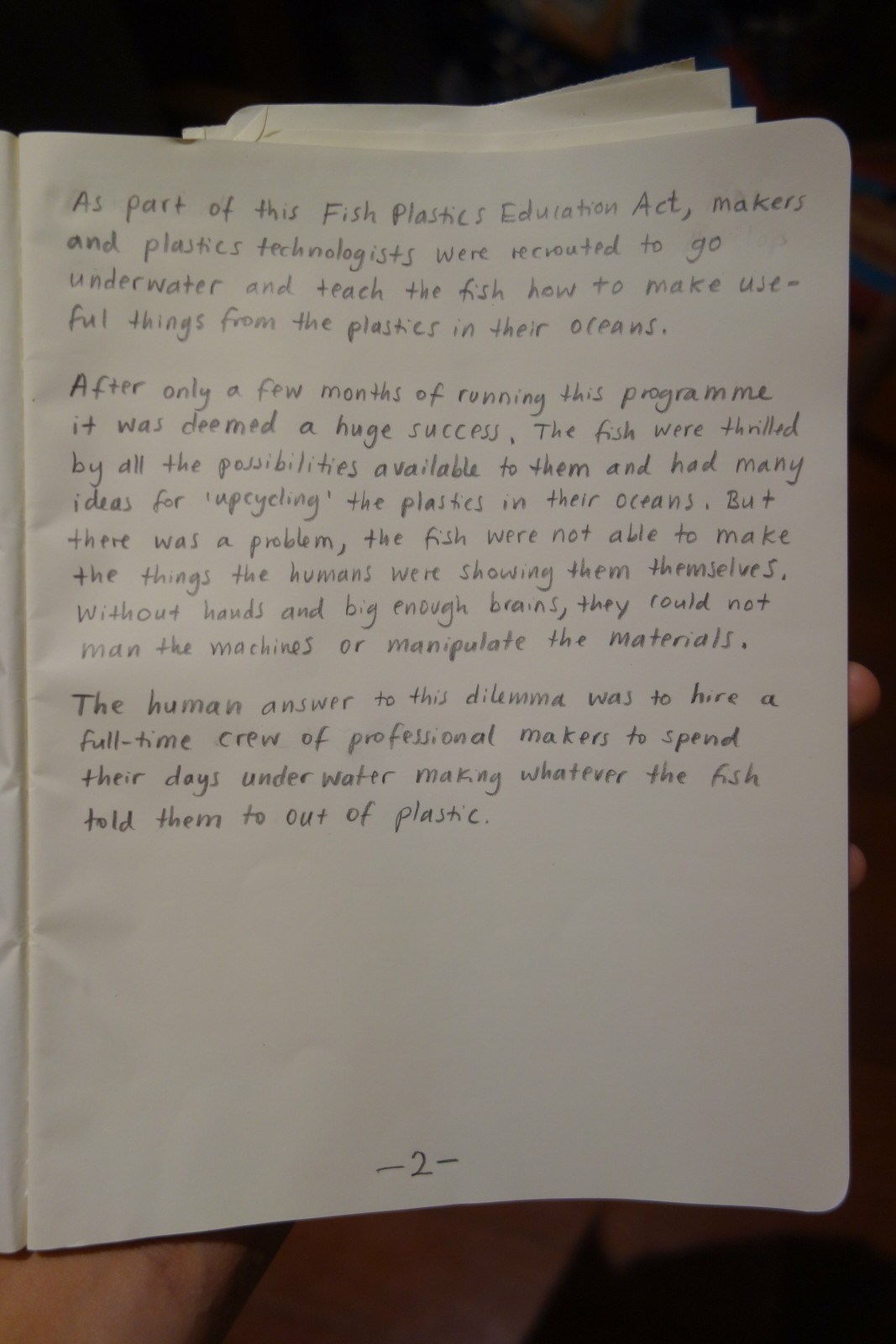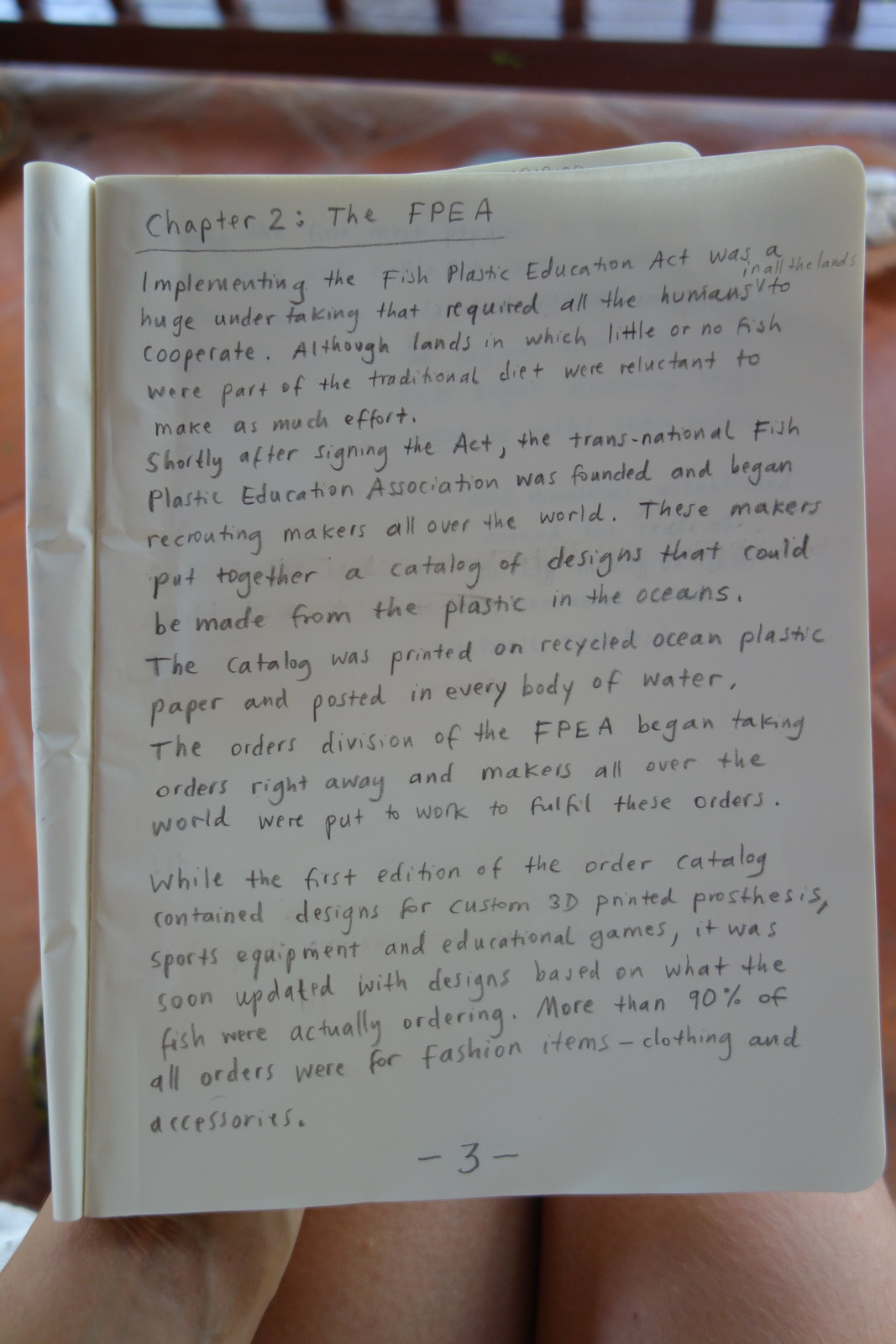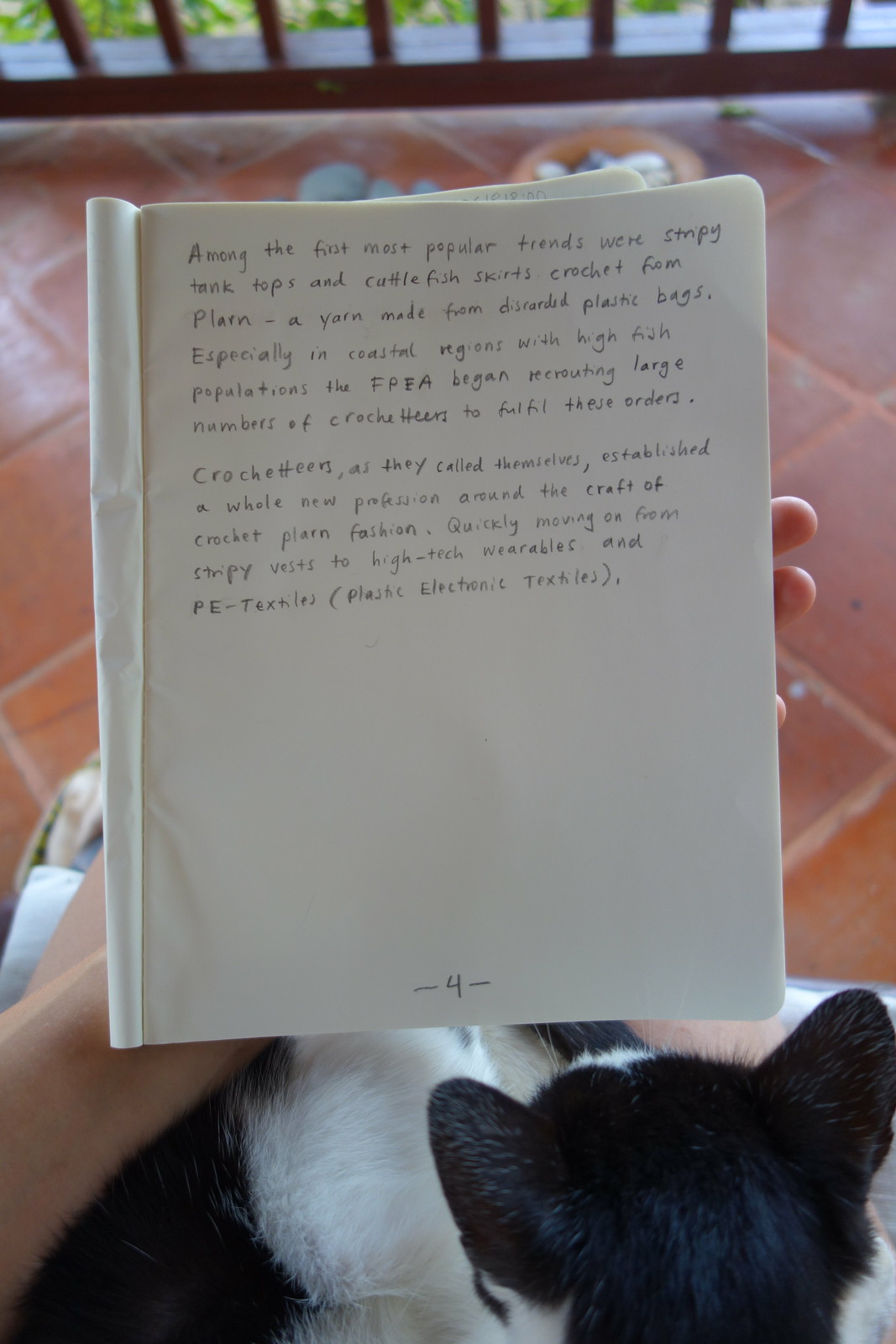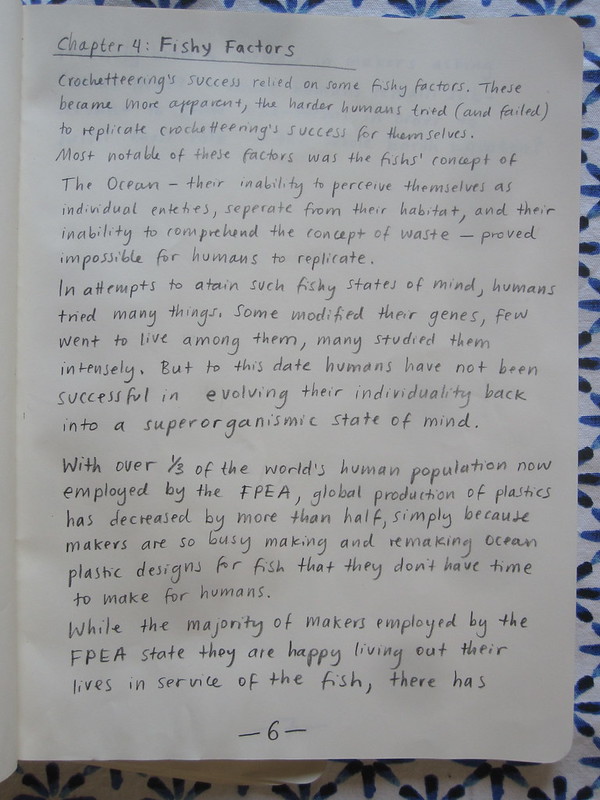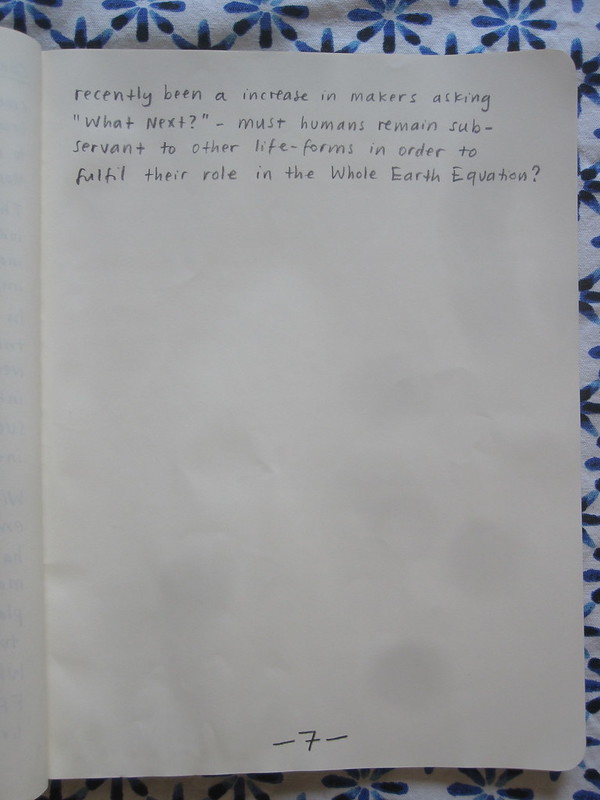Crochetteering (2018)
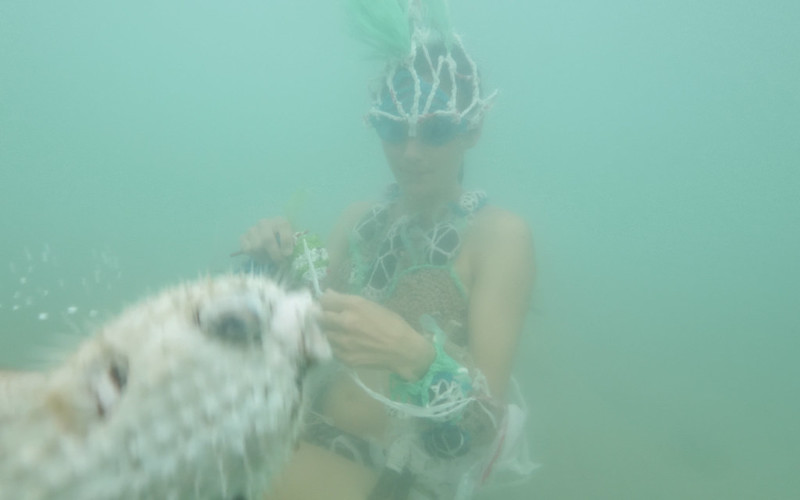
My plans for Dinacon were to develop An Underwater Studio Practice, but when I arrived and began going underwater to crochet and (thanks to Kitty) discovered plarn (plastic yarn), this practice lead me to write a story about ocean plastic as the result of our human ability to make.
>> https://www.dinacon.org/2018/07/24/crochetteering-a-tale-of-fishy-innovation/
>> https://www.dinacon.org/2018/06/02/an-underwater-studio-practice/
Flickr set >> https://www.flickr.com/photos/plusea/albums/72157696220704072
Chapter 1: The FPEA
One day all the fish in all the oceans complained to all the humans on all the lands about all the plastic in all the oceans. The humans were upset by this complaint be- cause although they had been suspecting for some time that all their plastic ending up in all the oceans was not a good thing, they had not done anything about it. The humans told the fish their complaint was unwarranted and continued to ignore a fact. The fish told the humans that they would result to drastic measures and threatened with bio-terrorism. Their equivalent of suicide bombing would mean swarms of fish would swim to highly toxic water to intoxicate themselves with pollution that would travel all the way up the food-chain to kill “innocent” humans.
This posed a serious thread that the humans could not choose to ignore. A committee was voted into action. This committee met for several week to come up with a very creative solution. And this was their conclusion:
Plastic is in fact a valuable resource and the fish have not been able to recognise this. Humans must educate fish on how they can use this resource to their own benefit.
As part of this Fish Plastics Education Act, makers and plastics technologists were recruited to go underwater and teach the fish how to make useful things from the plastics in their oceans.
After only a few months of running this programme it was deemed a huge success. This fish were thrilled by all the possibilities available to them and had many ideas for “up-cycling” the plastics in their oceans. But there was a problem, the fish were not able to make the things the humans were showing them themselves. Without hand and big enough brains, they could not man the machines or manipulate the materials. The human answer to this dilemma was to hire a fill-time crew of professional makers to spend their days underwater making whatever the fish told them to out of plastic.
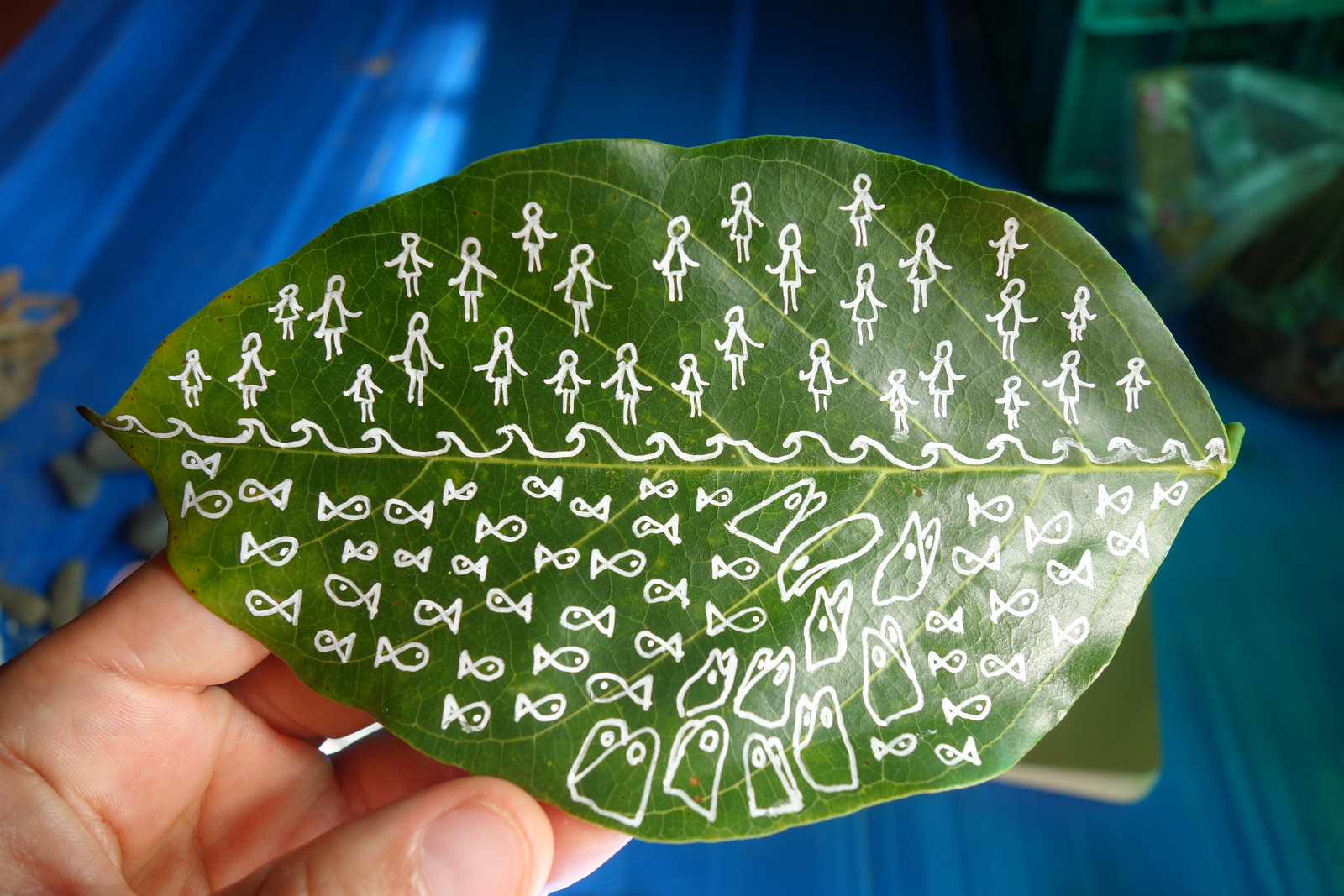
Chapter 2: Plarn
Implementing the Fish Plastic Education Act was a huge undertaking that required all the humans in all the lands to cooperate. Although lands in which little or no fish were part of the traditional diet were reluctant to make as much effort.
Shortly after signing the Act, the trans-national Fish Plastic Education Association was founded and began recruiting maker all over the world. These makers put together a catalog of designs that could be made from the plastic in the oceans. The catalog was printed on recycled ocean plastic paper and posted in every body of water.
The orders division of the FPEA began taking orders right away and makers all over the world were put to work to fulfil these orders.
While the first edition of the order catalog contained designs for custom 3D printed prosthesis, sports equipment and educational games, it was soon updated with designs based on what the fish were actually ordering. More than 90% of all orders were for fashion items – clothing and accessories.
Among the first most popular rends were stripy tank tops and cuttlefish skirts crochet from plarn – a yarn made from discarded plastic bags. Especially in coastal regions with high fish populations the FPEA began recruiting large numbers of crochetteers to fulfil these orders.
Crochetteers, as they called themselves, established a whole new profession around the craft of crochet plarn fashion. Quickly moving on from stripy vests to high-tech wearables and PE-Textiles (Plastic Electronic Textiles).

Chapter 3: Crochetteering
Fish, it turned out, were much more tech-savvy than humans, within only a few years every fish in the ocean was a digital native. As a collective super-organism, fish were the first to adopt ocean-wide wearable technology which they used primarily for data collection. Just like everything else that they depended on in their lives, the data they collected, belonged to The Ocean. The Ocean accumulated this data and every fish had unrestricted access so that they could know the effects of their behaviour on their ecosystem.
Crochetteers were at the forefront of developing these underwater wearable technologies and the first makers to fully comply with the fish’s demand for a zero waste, fully circular innovation process. “Crochetteering” because the term used to describe this holistic techno-craft invention process that only considers solutions that solve for the Whole Earth Equation (WEE) with a time-factor of <5 years. This means that every design in the Ocean Plastic Design Catalog has it’s full life-cycle planned in ahead. Resources remain resources. Waste becomes obsolete.

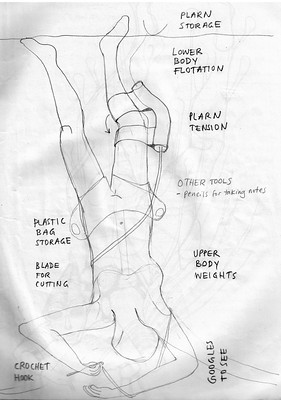
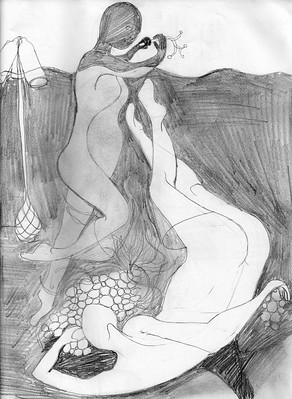

Chapter 4: Fishy Factors
Crochetteering’s success relied on some fishy factors. These became more apparent, the harder humans tried (and failed) to replicate crochetteering’s success for themselves.
Most notable of these factors was the fish’s concept of “The Ocean” – their inability to perceive themselves as individual entities, separate from their habitat, and their inability to to comprehend the concept of waste – proved impossible for humans to replicate.
In attempts to attain such fish states of mind, humans tried many things. Some modified their genes, few went to live among them, many studid them intensely. But to this date human have not been successful in evolving their individuality back into a super-organismic state of mind.
With over 1/3 of the world’s human population now employed by the FPEA, global production of plastics has decreased by more than half, simply because makers are so busy making and remaking ocean plastic designs for fish that they don’t have time to make for humans.
While the majority of makers employed by the FPEA state they are happy living out their lives in service of the fish, there has recently been an increase in makers asking “What Next?” – must humans remain sub-servant to other life-forms in order to fulfil their role in the Whole Earth Equation?

Crochetteering – a tale of fishy innovation
A good-night story for Dinaconnaisseurs

